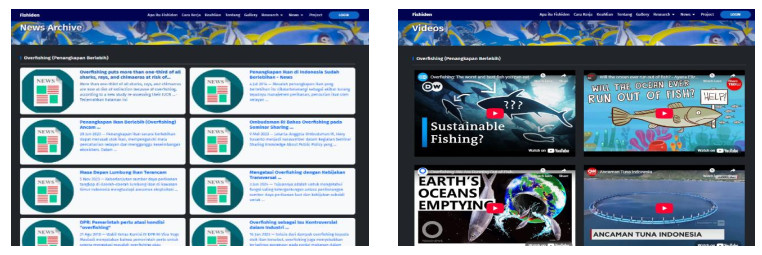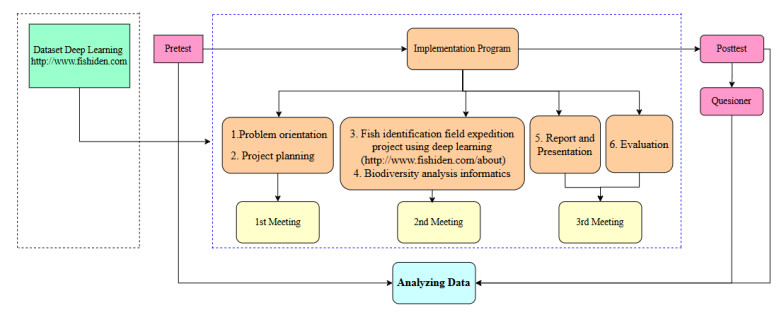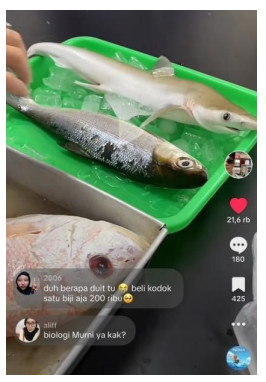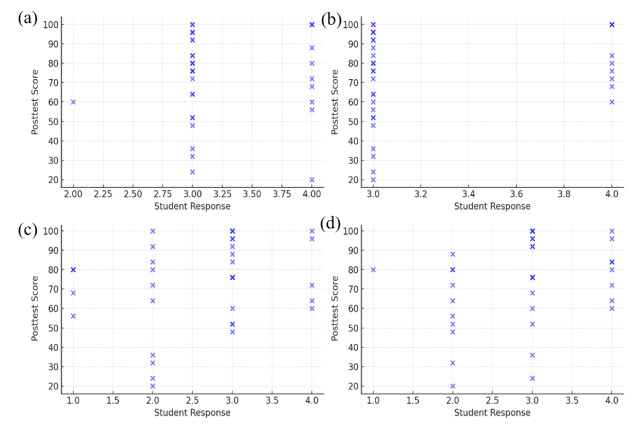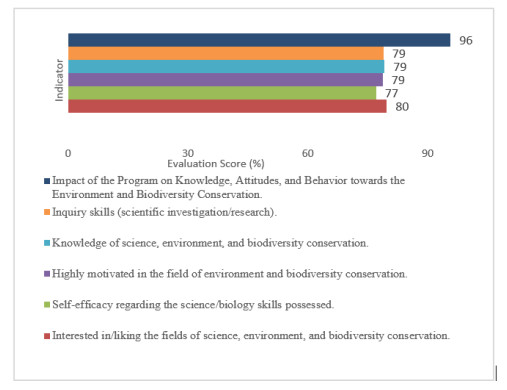1.
Introduction
Indonesia has a crucial role in preserving ocean biodiversity, serving as a key steward of marine ecosystems. It is estimated that Indonesia is home to 1248 species of freshwater fish and 3476 species of marine fish [1]. However, despite this vast potential, public awareness of the importance of ocean ecosystems remains limited, leading to overexploitation and habitat degradation [2,3]. This highlights the critical need to enhance ocean literacy, which supports conservation efforts and the sustainability of ocean ecosystems.
Ocean literacy, which involves understanding human interactions with the sea and the importance of maintaining the sustainability of ocean ecosystems, is a crucial aspect of education. The United Nations Decade of Ocean Science for Sustainable Development (2021–2030) has called for global efforts to enhance ocean science and literacy to address climate challenges and promote sustainable ocean management [4]. Integrating ocean literacy into educational curricula can raise awareness of ocean resources' ecological and socio-economic value and foster learning about sustainable practices that promote the responsible use of ocean resources [5,6,7]. Studies also suggest that education is crucial in shaping attitudes and behaviors toward ocean conservation, particularly among younger generations [8,9]. Unfortunately, ocean literacy, including in Indonesia, has not been a primary focus in formal education curricula worldwide. The national education curriculum in Indonesia tends to be homogeneous and overlooks local issues, including ocean literacy [10,11]. This gap highlights the need for innovative educational approaches to bridge the knowledge deficit.
Advancements in deep learning within education have demonstrated transformative potential. Studies indicate that deep learning improves personalized learning and student engagement, while enhancing educational outcomes through real-time feedback mechanisms and error prediction [4,12,13]. One promising solution is the application of deep learning technology in educational programs. Deep learning, a subset of artificial intelligence, has proven effective in solving complex tasks such as image recognition and data analysis with high accuracy. In fish identification, this technology enables the analysis of morphological and genomic data to accurately identify species [14,15]. Techniques like YOLO (You Only Look Once) have been applied for fish segmentation and classification, enabling fast and efficient species identification [16,17]. Moreover, integrating DNA barcoding with deep learning technology provides a more comprehensive approach to fish species identification, particularly for species with similar morphologies [18,19].
Integrating these technologies into education could revolutionize ocean literacy by providing data-driven, interactive, and engaging learning experiences. The United Nations Decade of Ocean Science for Sustainable Development (2021–2030) is aligned with this vision, encouraging global interdisciplinary collaborations to enhance ocean science literacy [4]. Deep learning-based learning programs allow students to study ocean biodiversity using morphological approaches and genomic data. This approach enhances students' understanding of ocean ecosystems and prepares them to contribute to future ocean resource management and biodiversity research [20,21]. Such programs can raise awareness among younger generations about the importance of ocean conservation by merging technological innovation with experiential learning [22]. The implementation of deep learning technologies in education faces several challenges. Literature suggests that educational curricula often overlook the integration of local knowledge and ecological issues, which diminishes student engagement and the relevance of the material to their lives [23,24,25]. The younger generation often perceives traditional teaching methods as less engaging and tends to respond better to technology-based learning approaches [26,27]. These shortcomings highlight the need for innovative educational solutions to reach younger generations more effectively.
Researchers have demonstrated the potential of technology to address these challenges. For instance, gamification and virtual reality have created engaging learning experiences and enhanced student involvement in environmental issues [28,29]. Citizen science initiatives have also proven effective in involving students in data collection and analysis, enhancing their understanding of scientific processes and their relevance to everyday life [30,31]. Ocean literacy programs can leverage deep learning technologies to create personalized and immersive learning experiences by learning from the successful implementation of these technologies in other sectors. This approach can potentially bridge the knowledge gap while inspiring real change among younger generations [5,32].
Here, we focus on developing a learning program using a website integrating deep learning technology to enhance ocean literacy (http://www.fishiden.com/about). This program is designed to overcome the limitations of traditional learning methods by providing an interactive platform for students to learn about fish biodiversity and water-related issues in Indonesia through videos and news articles in the media. This program integrates genomic data and contemporary media issues into the curriculum, offering a comprehensive approach to fish species identification. It enables students to deepen their understanding of genetic diversity and the ecological roles of marine organisms [33,34]. This approach not only enriches the educational experience but also supports biodiversity conservation efforts at local and global levels [35].
This research makes an important contribution by addressing the gap in applying deep learning technology for ocean literacy education. The novelty of this research lies in integrating genomic data and interactive technologies to create an innovative and effective learning tool. We analyze the impact of a technology-based learning program on student outcomes, providing important insights into the potential of deep learning technology to enhance ocean education. Our aim of this study was to implement a collaborative project and provide a learning experience for students in the field of biology through the use of the Fishiden citizen science platform. Additionally, we sought to evaluate the level of student engagement achieved. To achieve these objectives, a collaborative Fishiden project was designed to document marine fish diversity in a natural area near the school center. Concurrently, students were tasked with constructing a phylogenetic tree. Following these field activities, the students completed a simple questionnaire as an initial evaluation to assess their perceptions and acceptance of using citizen science tools in studying the biodiversity of marine fish.
2.
Materials and methods
2.1. Sample and data collection
The methodology used in this primary study was a quantitative approach to assess the effectiveness of Project-Based Learning (PBL), focusing on pre- and posttests of ocean literacy and student engagement with learning. The overall design of the fish diversity identification project with a deep learning model (YOLOv7) approach integrated with genomic data is designed with clear stages, starting from August to October 2024 (Figure 1). The content from www.fishiden.com was retrieved on 5th October 2024 to ensure the accuracy of the dataset used in the study. All participants consent, and the data collected is kept confidential and anonymous.
The first stage identified problems regarding the waters in Indonesia through videos and news about overfishing, invasive species, disposal of waste and garbage into the sea, illegal fishing, and hunting of rare/protected fish found at http://www.fishiden.com/news, which was done in groups (Figure 2). The students were guided through a structured learning approach, utilizing deep learning tools for fish identification, which helped them engage with real-world marine conservation issues.
Second, we planned a fish identification project, formulated problems, and planned outcomes of observations. Third, field observations and trips involved searching for information and fish identification using deep learning technology through the Fishiden platform. The deep learning model used was YOLOv7. The fishiden page displayed a description of the identified fish, which included its taxonomy, morphological features, conservation status, conservation efforts based on Indonesian Government Regulation, and the fish's genomic data. (Figure 1(c)). Fourth, biodiversity analysis and informatics for creating phylogenetic trees were done using ClustalX and Treeview applications, based on fish genome data obtained from the Fishiden platform, to map kinship and conservation status. This approach enhanced students' understanding of genetic diversity within fish populations. Fifth, the students reported the results in the form of presentations in class, with output observations in the form of short videos promoting ocean conservation, which were published on social media platforms (TikTok, YouTube, or Instagram), along with oral presentations. Finally, feedback, reflection, and evaluation of the lecture program are provided. This program design was based on principles developed by Echeverria et al. [36] (Figure 3).
Participants in this study were students from a higher education institution in Bogor (West Java Province, Indonesia) who had previously taken a course on vertebrate classification and diversity (N = 36) in 2024. Before this study, the participants had not learned about fish identification using deep learning technology integrated with genomic data and had never created a phylogenetic tree using application tools. This ensured that the participants' prior knowledge did not affect the outcomes of this new learning methodology. All students were taught by the same lecturer, ensuring consistency in the delivery of learning materials.
This design is effective in evaluating students' cognitive and behavioral engagement following the implementation of active learning strategies, despite using a single group with a small sample size [37]. The main experiment involved testing the impact of using the genome data integrated website on students' ability to identify and classify fish. Following data collection, analysis was conducted to evaluate the program's learning outcomes and overall success.
2.2. Measures of variables
Data collection in this study entailed several instruments designed to collect leading and supporting data. The primary data were collected through an ocean literacy test measuring students' ocean literacy levels before and after participating in the learning program, consisting of 26 questions. These tests were administered online via the Edcite platform, which enabled dynamic assessment. The ocean literacy test was delivered using the https://www.edcite.com/ application, which enabled the evaluation of student's understanding of the basic concepts of ocean literacy to be conducted online. The application provided an interactive, real-time learning environment to assess student progress.
The ocean literacy assessment was developed based on two fundamental principles [38], which include the role of the ocean in supporting life and ecosystems and the relationship of the ocean to human activities. These two principles were chosen because they are relevant to the material taught in this lesson, which emphasizes ocean biodiversity and conservation. The concept of fundamental principles in Table 1.
The questionnaire, based on the input-process-output model, measured students' responses to the program and the overall learning experience [39]. This questionnaire was distributed through the https://www.jotform.com/myforms/ application and aimed to measure students' engagement and satisfaction with the learning, as well as their level of knowledge regarding fish diversity and ocean conservation. The questionnaires evaluating students' engagement in learning (31 statements). The statements in the questionnaire were organized based on the framework proposed by Li et al. [40], which focused on students' perceptions of the program's impact on their interest in science.
A structured questionnaire was designed to evaluate students' views on learning. The instrument comprised several constructs, each measured through a series of statements: students' interest in science, the environment, and biodiversity conservation (5 statements); confidence in science and biology-related skills (3 statements); motivation in the domain of environmental and biodiversity conservation (3 statements); knowledge pertaining to science, the environment, and biodiversity conservation (6 statements); scientific investigation skills (8 statements); and pro-environmental behavior and responsibility concerning ocean conservation (8 statements).
2.3. Models and data analysis procedure
Data collected from the pretest, posttest, and questionnaires were analyzed to assess changes in ocean literacy levels and student perceptions of the learning program. Results from the ocean literacy test were analyzed using descriptive statistics to identify general trends in knowledge acquisition between the pretest and posttest. Cronbach's alpha reliability coefficient was calculated to assess the instrument's internal consistency. The reliability value for the pretest was α = 0.899, and the posttest was α = 0.781, indicating good consistency [41].
The questionnaire responses were evaluated using a Likert scale to assess students' satisfaction and engagement with the learning process. The scale ranged from "strongly agree" to "strongly disagree" (1–4 points), and the data were analyzed using descriptive statistics. The reliability of the questionnaire was assessed using Cronbach's alpha, ensuring consistency in the data (α = 0.89). The analysis also included normality and homogeneity testing to ensure the feasibility of using parametric tests. To evaluate the effectiveness of the program, a non-parametric Wilcoxon test (α = 0.05) was conducted to compare changes in ocean literacy between pretest and posttest, correlating student responses, posttest scores, and improvement (N-gain). This statistical analysis highlighted significant improvements in student engagement and knowledge.
3.
Results
The fish identification conducted in this project resulted in the identification of 16 ocean fish species. Based on Table 2, most species are classified as Least Concern (LC) or Not Evaluated (NE), suggesting they are not facing significant threats or lack sufficient data for proper assessment. However, certain species, such as Thunnus spp., require special attention. Some species, including Thunnus obesus (Bigeye Tuna), are classified as Vulnerable (VU) due to overfishing. Sardinella lemuru is classified as Near Threatened (NT), indicating a declining population likely caused by overexploitation. Additionally, several species within the Epinephelus genus are classified as vulnerable or threatened due to high fishing pressure and trade demand. Therefore, conservation efforts should prioritize species such as Thunnus sp., Sardinella lemuru, and Epinephelus sp. by implementing sustainable fisheries management, seasonal fishing bans during spawning periods, and habitat protection to maintain population balance and ensure long-term ecological stability.
Students successfully mapped species relationships and gained insights into local genetic biodiversity. Presentations of the identification results were made in class, and to extend the impact of the project, students also created short videos containing messages to preserve the ocean, which were then published on social media platforms such as TikTok, YouTube, and Instagram (Figure 4). These videos not only spread information about the fish species found but also raise public awareness about the importance of ocean conservation, which aligns with the project's goal of promoting ocean environmental protection to the broader public.
Analysis of students' ocean literacy showed significant improvement after the learning program. Before the intervention, the mean pretest score of students was 58.11, with most of the score distribution in the range of 50–70. However, after participating in the application-based learning and fish genome data, students' posttest scores increased substantially, with the mean score reaching 71.88. Wilcoxon test results showed a significant statistical difference (P = 0.02, P < 0.05), confirming the program's success in improving students' understanding and knowledge of ocean literacy.
The distribution of posttest scores showed that most students achieved scores in the 90–100 range, indicating a deeper understanding of ocean issues following the intervention. This finding aligns with the literature stating that using technology-based media in education, such as digital platforms and genomic databases, can improve learning outcomes and understanding of complex material [42].
Positive responses to the ocean literacy program were directly related to improved post-test scores, indicating that students who responded more favorably to the program tended to have better outcomes. In addition, there was a positive relationship between the level of improvement (Ngain) and posttest scores, indicating that those who experienced the most significant improvement also scored higher in the posttest (Table 3). This supports earlier research demonstrating that positive feedback significantly enhances academic performance [43].
The learning program evaluation showed positive results, with some aspects that can be further improved. Based on the assessment conducted on the learning activity process, this aspect obtained the highest score (90%), reflecting the effectiveness of implementing the activities. A well-structured learning process involving technology and a fish genome data-based approach increased student engagement and understanding of the material presented. Moreover, the score on the output aspect of the learning activities was 80%, indicating that the results of this program are already quite good, although there is room for improvement.
Distributions between the four aspects of student responses that had the most significant influence on posttest score improvement: (a) Ocean literacy training, (b) views on ocean literacy, (c) new learning experiences, and (d) importance of identification skills (Figure 5). Students who had positive views on the importance of ocean literacy and fish identification skills showed a more significant increase in posttest scores. This reinforces the finding that students' active engagement in the experiential learning process can improve their understanding of ocean issues.
Evaluations of scientific research skills, knowledge, motivation, and interest in the ocean field showed good scores, ranging from 77% to 80%. However, there is potential to improve these aspects through a more intensive approach to practising research skills and understanding ocean-related scientific concepts. Figure 6 presents the evaluation results for several indicators related to a program aimed at enhancing knowledge, attitudes, and behaviors toward environmental and biodiversity conservation. The evaluation measures five key aspects, including the program's impact, inquiry skills, knowledge of science, environment, and biodiversity conservation, as well as participants' motivation and interest in these fields. The results indicated that the first indicator, the program's impact on participants' knowledge, attitudes, and behaviors, received the highest score of 96%. The other indicators, such as inquiry skills, knowledge of science and biodiversity conservation, and motivation in the field, scored relatively similarly, ranging from 77% to 80%. Additionally, the indicators measuring participants' self-efficacy regarding their science/biology skills and their interest in science, environment, and biodiversity conservation showed a comparable score of 80%. These results reflect the program's effectiveness in enhancing participants' understanding and engagement with environmental and biodiversity conservation issues.
4.
Discussion
The implementation of a project-based learning (PBL) approach integrated with deep learning technology and genomic data has demonstrated promising results in enhancing ocean literacy among undergraduate students. The outcomes of this study, including the significant improvement in posttest scores and the observed positive engagement levels, underscore the effectiveness of innovative educational strategies in addressing the persistent gaps in marine science education.
A central achievement of the program was the identification of 16 marine fish species using the Fishiden platform, which combines morphological and genomic data. This outcome reflects not only students' cognitive acquisition but also their skill development in biodiversity informatics. The taxonomic results, highlighting the conservation status of species such as Thunnus obesus (Vulnerable) and Sardinella lemuru (Near Threatened), bring to light the urgent need for education to emphasize sustainability and conservation. The disparity between marine and freshwater biodiversity, as outlined by Jiménez et al. [44], supports the rationale for marine-focused curricula, particularly in biodiversity-rich regions like Indonesia.
While constructing phylogenetic trees, students employed genomic data using tools like ClustalX and TreeView, an approach consistent with the methodological frameworks [45,46]. This application not only provides technical training but also fosters an understanding of evolutionary relationships, a critical aspect of marine biology. The integration of such bioinformatics tools represents a shift toward data-rich, inquiry-based learning environments that deepen conceptual understanding [47]
The significant improvement in ocean literacy, as evidenced by the mean posttest score increase from 58.11 to 71.88 and supported by the Wilcoxon test (P = 0.007), aligns with findings from Dees and Momsen [48] and Pirie et al. [49] confirming that structured educational interventions can effectively elevate environmental knowledge. The average N-gain of 0.30 further indicates moderate learning gains, highlighting the program's efficacy in promoting cognitive advancement.
Moreover, students who expressed more positive attitudes towards ocean literacy and valued fish identification skills showed the greatest learning improvements. This correlation supports research by Bernárdez-Rodríguez et al. [50], which emphasizes the influence of engagement and perception on academic outcomes. The linkage between student responses, posttest scores, and N-gain, as illustrated in Figure 4, underscores the importance of fostering a positive learning environment.
The evaluation scores on various indicators of engagement and scientific skill development ranged from 77% to 96%. Notably, the highest rated indicator was the program's impact on students' knowledge, attitudes, and behaviors toward biodiversity conservation (96%), echoing findings by Sun et al. [51] and Wardi et al. [52] on the transformative potential of environmental education. These results suggest that experiential and technologically enhanced learning can lead to attitudinal shifts that support long-term conservation behavior.
The success of the Fishiden platform as a citizen science tool also demonstrates the potential of such initiatives to bridge gaps between formal education and real-world application. According to Loury et al. [53], participatory platforms that involve users in data collection and analysis significantly increase scientific literacy and community engagement. This dual impact of learning and advocacy was evident in the students' production of social media content advocating for marine conservation, a strategy supported by Brame [54] for its effectiveness in extending learning beyond the classroom.
From a technological standpoint, the use of deep learning models such as YOLO for fish identification has revolutionized the educational landscape by enabling real-time, accurate species recognition [16,17,55]. However, challenges such as higher error rates in identifying rare or morphologically similar species and limited training datasets can affect its overall accuracy. The pedagogical value of this approach lies in its capacity to deliver immediate feedback and personalize the learning experience, thereby enhancing student engagement and conceptual retention [56]. In future studies, incorporating error analysis could guide students in understanding model limitations and improving critical thinking.
Furthermore, integrating genomic data into educational curricula not only enriches the learning content but also prepares students for advanced scientific research and environmental management roles. Nonetheless, coverage bias in genomic databases, particularly underrepresentation of certain local species, poses a challenge that should be addressed by developing more inclusive datasets. This aligns with recommendations from Freitas et al. [57] and Lai [34], who advocate for genomics-informed education as a means to deepen ecological understanding and foster environmental stewardship.
Despite the positive outcomes, we identify areas for further development, particularly in enhancing interactive and practical components of the curriculum. The current quasi-experimental design, which lacks a control group, limits the ability to isolate the independent effect of the technological intervention. Future studies should consider including a traditional teaching group as a control to strengthen causal inference. The current educational system in Indonesia, often criticized for its lack of contextual and environmental relevance [10,58], could greatly benefit from integrating locally adapted, technology-driven modules like the one developed in this study. Expanding the study to include students from multiple institutions and academic backgrounds could further enhance the generalizability of the findings. Fadlia et al. [59] and Puad et al. [60] support this approach, noting that digital platforms can democratize access to marine education and foster community involvement.
Compared with global trends, this research contributes uniquely by embedding deep learning and genomic data into a project-based framework tailored to local biodiversity issues. The web-based platform used in this study offers a promising solution to key challenges in marine science education, including low engagement, fragmented knowledge, and limited field experience. While most researchers focus on either morphological identification or algorithmic advancements, our holistic approach sets a precedent for future educational innovations. The ability of such programs to influence student perspectives on marine conservation is critical for sustainable development [61,62,63].
5.
Conclusions
This study offers significant contributions to integrating deep learning and genomic data within ocean literacy education. By applying cutting-edge technologies in educational settings, the research has expanded our understanding of how these innovations can enhance students' knowledge of ocean biodiversity, particularly fish species identification. The findings support the notion that deep learning and genomic tools can provide more interactive and accurate learning experiences than traditional methods. This addresses a gap in the existing literature by incorporating interdisciplinary approaches, combining bioinformatics and computer science with pedagogy, and demonstrating their potential in environmental education.
Integrating deep learning technologies in ocean literacy education presents opportunities for policy changes in educational curricula, particularly in Indonesia and other countries with significant marine biodiversity. This study suggests that incorporating more technology-driven, hands-on learning experiences could better prepare students for future environmental conservation challenges. Policymakers should consider including such innovative approaches in national education frameworks, focusing on environmental sustainability and ocean conservation. Further integration of these technologies could potentially lead to a more engaging and effective method for fostering awareness and action toward ocean preservation.
While this study makes valuable contributions, there are several limitations that should be addressed in future research. First, our quasi-experimental design lacks a control group, which could enhance the validity of the results. Researchers should include a comparison group using traditional teaching methods to assess the independent effects of the technological intervention. Additionally, expanding the sample size and incorporating participants from different regions and disciplines could improve the generalizability of the findings. Researchers could also explore the error rates of deep learning in identifying rare species and address the coverage bias in genomic data to further refine these technological tools for educational purposes.
Use of AI tools declaration
The authors have not used Artificial Intelligence (AI) tools in the creation of this article.
Acknowledgments
We want to thank the Faculty member of Training Education, Pakuan University, and all the students who participated in their support for this research.
Center for Higher Education Funding and Assessment (PPAPT), Indonesia Education Scholarship (BPI) and the Education Fund Management Institute (LPDP) funded this research.
Munandar: writing-original drafting manuscript, data acquisition, data analysis/interpretation, visualization; Hidayat: Conceptualization, design, statistical analysis, supervision, final approval; Sanjaya: Methodology, validation, critical revision of manuscript; Riza: methodology & validation, critical revision of manuscript. All authors have read and agreed to the published version of the manuscript.
Conflict of interest
The authors declared no potential conflicts of interest with respect to the research, authorship, and/or publication of this article.
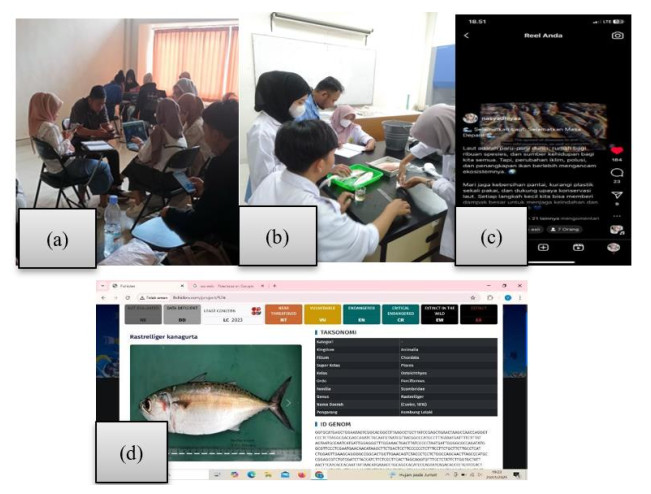









 DownLoad:
DownLoad:
